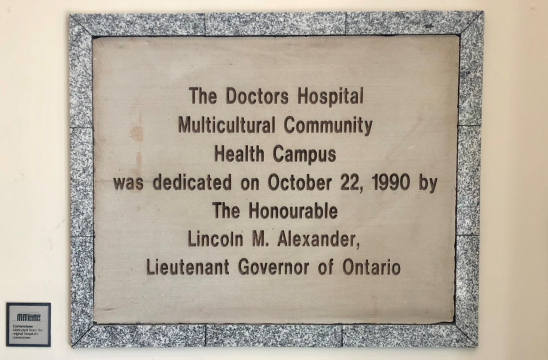Standing with our Black colleagues
Like many of you, I have been watching the news, learning and listening as Black Lives Matters and anti-racism protests take place across the US, Canada and in our own backyard. And while the fight for racial justice may not have been the world’s focus a few short weeks ago, the horror of George Floyd’s brutal death has ignited more than just a series of protests, but a global rethinking of institutionalized relationships with Black and other racialized communities including our own.
That is admittedly not always an easy thing to do as challenging assumptions requires at the outset an admission that they even exist in the first place.
These have always been important issues for the Kensington community. They are part of our very fabric - and inform our own history as a local provider of healthcare. It’s important to remember that the area surrounding what’s now Kensington Market - celebrated as a national heritage site - was just a century ago known as St. John’s Ward and Canada’s largest slum. Overpopulated and overwhelmed with the poorest of living conditions, from the mid-19th century to the mid-20th it was home at various points to African-Canadians who escaped slavery through the Underground Railroad, refugees from the Irish Potato Famine, Russian and Eastern European Jews, Italian and Chinese immigrants and many, many more. A community of diversity that exists to this day.
Kensington Health saw its inception as The Doctors Hospital in 1954 and pioneered healthcare for the local community of newcomers made largely of labourers and working families who needed care outside “hospital hours,” paving the way for our ambulatory clinics. Many of the doctors were locals, lived in the neighbourhood and because of their race or ethnicity were refused practicing privileges at other Toronto hospitals.
Well before a discourse on diversity, race and inclusion emerged as integral to accessible healthcare, The Doctors Hospital philosophy was a promise to accommodate as many of the cultures in the community as possible. A holiday card sent to donors in the 70s offered good wishes from the hospital "where more than 40 languages are spoken". It is, quite literally, the cornerstone of our history, celebrated on that very structure in the lobby of our building at 340 College Street.
This plaque of the original Doctor's Hospital hangs at the entrance of the Kensington Health clinics at 340 College Street.
So what does it mean to hold that legacy now in the face of a global conversation about anti-Black racism? How might we consider our own history, that of the surrounding community and at the same time commit to rethinking current practices, assumptions and actions?
The clarion call that’s been sounded in the wake of George Floyd’s death has been a rally for the world to listen to Black voices first and foremost. But listening must be more than just a spectator sport, but an active commitment to hearing, learning and acting without placing the onus on marginalized groups to educate non-marginalized people on history or their experiences.
As my colleague John Yip, CEO of Kensington Health, noted in his heartfelt message to staff, this moment has given us a chance rethink what we are doing now, unpack how we can do better to support our diverse community, particularly our Black colleagues carrying an extra burden. Most importantly, recognize we can always do more. That includes an active and ongoing re-examination of our history in concert with our actions, our practices alongside our promise. As we stand with the Black community, we will also take action. Lasting change takes an ongoing commitment. Dynamic and fluid, it moves. As will we.
- By Corinne Rusch-Drutz, PhD, CEO of Kensington Health Foundation
